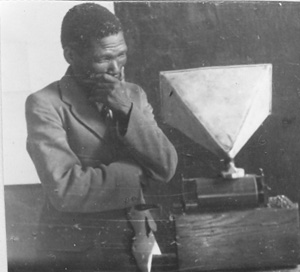Hoffmann tunes into aural archives

'This dialogic re-evaluation of a recording session, of Dammann's text and of some of the aspects that were written out of his text but seemed to appear in the lyrics, was certainly the best moment of my PhD research on landscape and praise poetry in Namibia,' she says.
From 2007 to 2009, Hoffmann was a postdoctoral fellow at the Programme for the Study of the Humanities in Africa, at the University of the Western Cape, where she worked on recordings by Hans Lichtenecker, who also produced life-casts, photographs and an unpublished travelogue in Namibia in 1931.
The result of her engagement with the collection was the exhibition, What We See, which opened at the Iziko Slave Lodge in February 2009, and has since then traveled to Basel, Vienna, Osnabrück and Berlin. The publication, What We See: Reconsidering an Anthropometrical Collection from Southern Africa - Images, Voices and Versioning (BAB, 2009), accompanied the exhibition.
In 2010, as a postdoctoral fellow at Fort Hare (South African Research Chairs Initiative), Hoffmann co-authored and co-published the volume, Sensible Sammlungen: Aus dem Anthropologischen Depot (with Britta Lange and Margit Berner, 2011), worked on recordings from Mozambique, and on recordings of African prisoners of war in WWI.
As a member of the APC initiative, she will continue to engage with aural archival material, specifically the recordings of missionary Franz Mayr from Pietermaritzburg in 1908.
In August this year Hoffmann will be convening a workshop introducing participants to the field of Sound Studies - an attempt to engage with sound, voice, noise and silence beyond the scope of musicology. 'Sound Studies seek to analyse cultural practices that create audiences, ways of hearing and listening, the production of music and sound, and its repercussions in the social world as well as the relation between the aural and the visual,' she explains.
For information about the August workshop, watch this space...